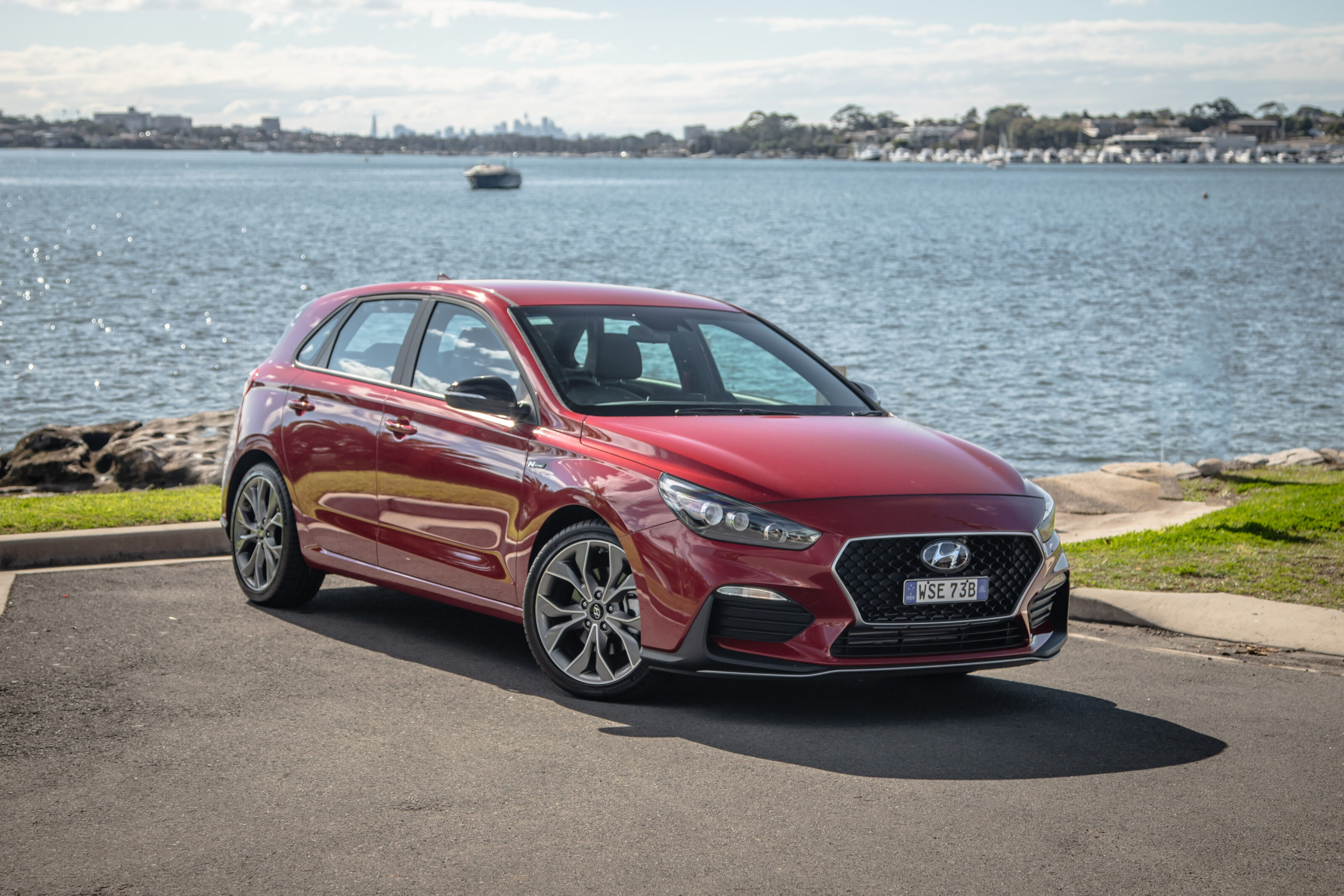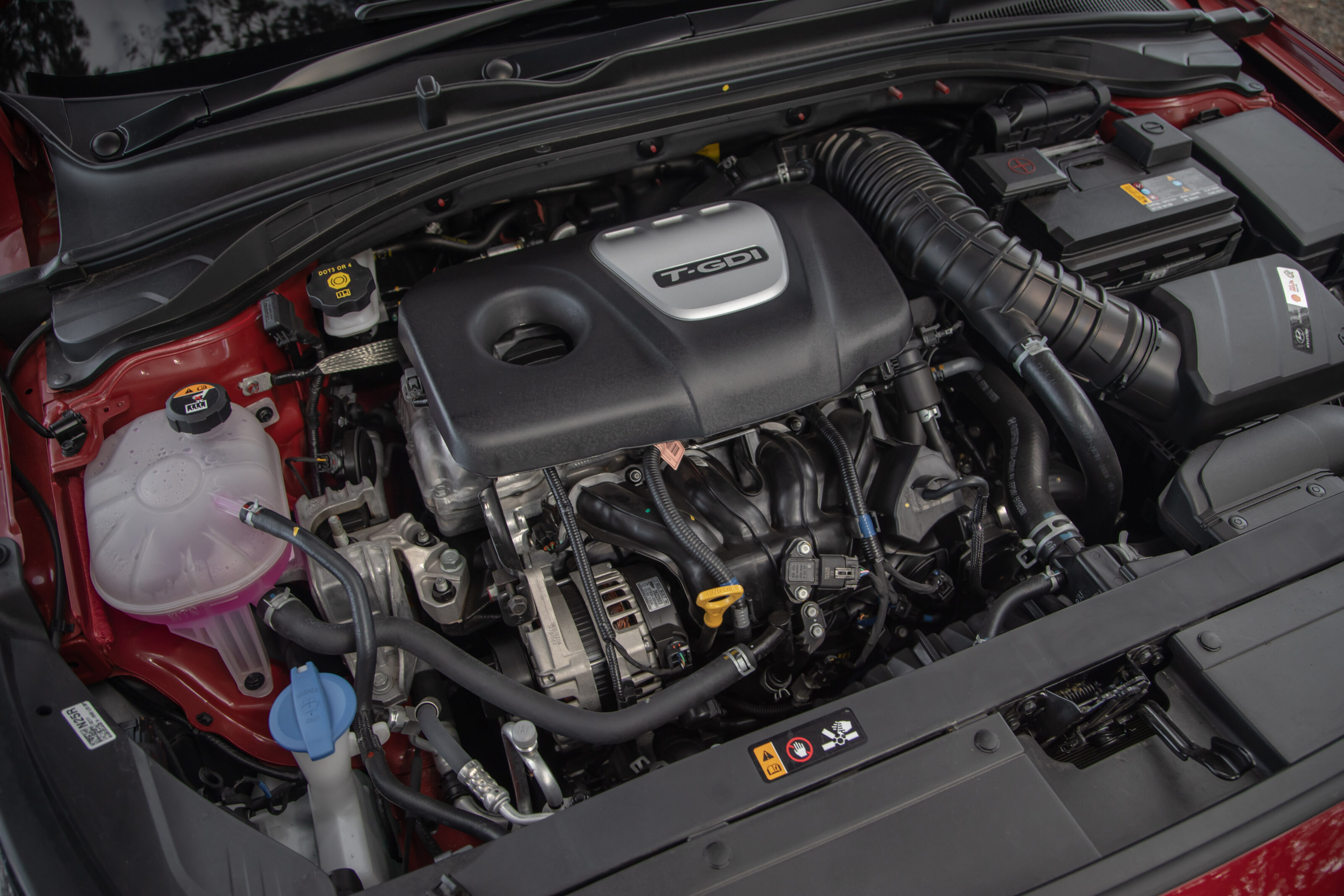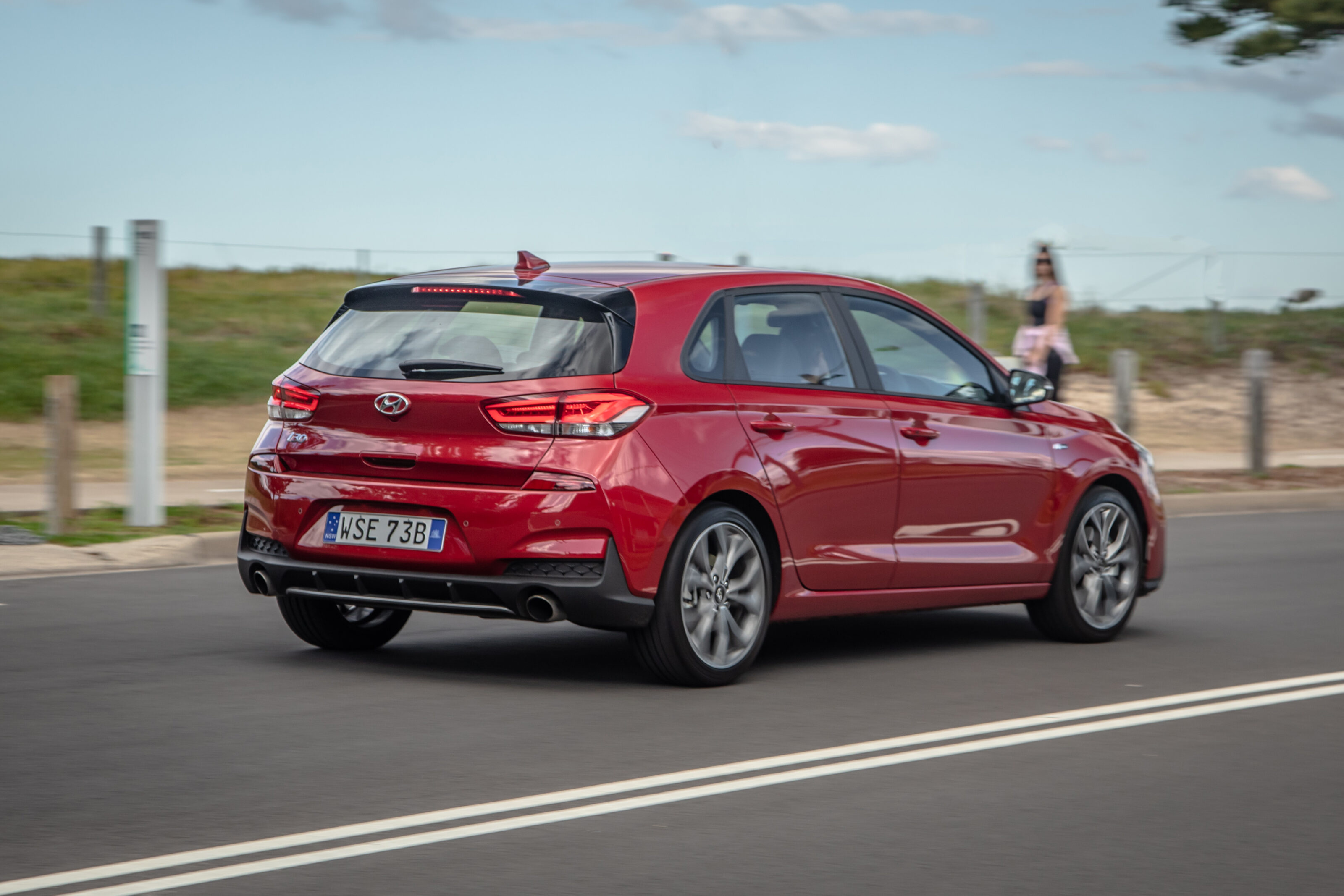Score breakdown
Things we like
- Fun chassis
- Good spec
- LED headlights
- Sensible servicing prices
Not so much
- Lack of advanced safety features
- Boring engine noise
- Tight rear seat
I don’t think I can quite remember as successful a launch as Hyundai’s N brand. It was hardly an overnight success, though. Hyundai had dabbled in the WRC once or twice and made precisely nothing of it, which must have been a bit of a drag.
After a few goes and after finally gaining some traction with the SR Veloster and i30, it was the business plan that brought in BMW M’s Albert Biermann to spearhead the next letter in the alphabet and produce the critical and sales success that is the i30 N. Everyone knew what N was pretty quickly, it was plastered all over the side of the moderately successful WRC team’s cars and all was well in the Hyundai world.
Renault and Peugeot and any number of European manufacturers had hit on this clever idea a few years earlier and made plenty of cash turning out warmed-up machines to bask in the halo of the top-spec cars that might be out of reach (or impractical) for some buyers.
All it had to do now was annoy i30 SR owners and change that badge to N-Line.
Pricing and Features

The N-Line is the top of the tree for the “standard” i30 range and you have a choice of four distinct variants. The N-Line comes with either a six-speed manual or seven-speed dual-clutch transmission, with another pair of N-Line Premiums above those.
The car I had for the week was the start of the N-Line range, the six-speed manual. Sort of based on the Active spec, it comes in at $29,420 before on-roads, $800 under the i30 Elite and $2500 more than the 2.0-litre naturally-aspirated Active automatic.
If you want a DCT N-Line, you’ll pay a further $2000 and then the N-Line Premium (based on the Elite spec) comes in at $34,220 (manual) and $36,220 (DCT). Clear? Good.
The N-Line manual is pretty well-equipped, sitting on 18-inch alloys shod with Michelin Pilot Sport 4 tyres (worth the price of admission alone, I reckon), a six-speaker stereo, dual-zone climate control, reversing camera, keyless entry and start, rear parking sensors, auto LED headlights (yes!), fake leather interior, wireless charging, power windows and mirrors, auto wipers, requisite external body kit and interior N branding, and a space-saver spare.
Hyundai’s smaller multimedia unit is included, with the 8.0-inch touchscreen, and comes with wireless Apple CarPlay and Android Auto to complement the wireless charging pad. It’s an older system so doesn’t have sat-nav but I reckon it’s better than giving up wireless phone integration and the screen is plenty big enough, so don’t sweat missing out on the larger screen.

The solid safety spec only misses out on rear AEB, coming at you with seven airbags (including a knee bag), the usual traction and stability controls, driver attention monitoring, forward collision warning, forward AEB, lane following and lane-keep assist, reversing camera and rear parking sensors.
It’s kind of annoying that the N-Line’s safety tech package is the same whether you go Premium or not and misses out on the reverse cross-traffic alert, blind-spot monitoring and safe exit warning that the Elite has.
There are three top-tether anchors and two ISOFIX points for the child and baby seats.
The i30 scored its five-star ANCAP rating in 2017.
The N-Line is the top of the tree for the “standard” i30 range and you have a choice of four distinct variants.
Comfort and Space

Another of the N-Line’s useful upgrades over the standard car is the front seats. Upholstered in quite nice fake leather, they’re a bit more grabby than the standard seats and look better too. Throw in a set of lurid coloured seatbelts and you get that N flavour without the higher price.
Sadly there isn’t a conventional handbrake (if you have to ask you probably don’t need or want to know) but the upside is an uncluttered console, with two cupholders and the wireless charger as well as a handy couple of USB ports and a 12V outlet. The front doors have slim bottle holders.
The rear seat of the Hyundai i30 isn’t huge, more suited to shorter trips if there’s an adult squeezed in. I can get in behind my driving position, but my knees touch the seatback, which has a plastic shield. You do get air vents in the back, which is nice, and the armrest has two cupholders. The doors have slim pockets with a bottle holder but they’re for smaller bottles only.
The boot is a handy 395 litres with the seats in place and if you fold the rear seats it rises to an impressive 1301 litres. If you want more space again, the grand-or-so more expensive i30 Sedan N-Line (still known as Elantra overseas) has a huge boot, more legroom and a very different interior.
On the Road

There aren’t many small hatchbacks left that will offer you the option of a manual transmission and for this small mercy I thank Hyundai. I’ve only ever driven SR and N-Line hatches in DCT and, as many of us here at Wheels have said, it’s not the most convincing twin-clutch transmissions when you’re just going about your daily business.
But the six-speed manual is pretty slick, possibly a lesson learnt from the near-universal praise of the i30 N’s carbon-ringed wonder. So that’s a good start – it’s not a ‘that’ll do’ cheapie. The clutch is pretty light, though, which is a bit of a shame but is easy to use and not as obstructive as past clutches in Hyundais (I’m looking at you, old Veloster Turbo).
So that’s a pretty good start. As ever, there’s a Hyundai Australia suspension tune underneath you, which pairs very nicely with the already-mentioned Michelin Pilot Sport 4s. These are a great choice of tyre and as we recently reported, they’re going to be on the i30 Sedan N. They’re also the replacement tyre of choice for N aficionados who don’t like the axle tramp of the P-Zero HNs.
The N-Lines ride 5mm lower on stiffer springs and dampers and I’m willing to bet that the electric steering is a completely different calibration to the standard car and feels better than the last SR I drove. That tune felt a bit numb under power and I felt I wasn’t always across what might be happening as I was powering out of a corner.

The engine is the mildly updated 1.6-litre direct-injected turbo. It has never been a particularly charismatic engine and there’s no change in that respect. It does deliver a healthy 150kW at 6000rpm and even healthier 265Nm across a wide band, stretching generously from 1500-4500rpm, so there’s plenty of opportunities for shenanigans.
Now, one of the things I really like about the i30 is the driving position. Most Hyundais have it absolutely nailed, the relationship between hips, arms, feet, pedals, it’s just about perfect. You don’t sit too high like you do in most smaller performance hatches and the view out is really good.
Slot it into first, not many revs and you’re away. It’s such an easy car to putter about it in, as long as you don’t forget, like I did once, that it’s a manual and you get an amusing stick-shaker style anti-stall effect giving you a chance to save yourself from embarrassment.
The suspension seems to have had the hard edges knocked out of it, too, with a more compliant compression effect, at least as far as I can remember. That further strengthens its position on the list of “cars my wife reckons she could own” which is a very, very short list. It’s still firm, but I found it less resentable than the SR and made me appreciate the fact that this car is a lot of fun.

It’s more analogue than the N, without any rev-matching or tricky N modes. It’s warm but hardly gutless and pulls really nicely out of corner exits. I really like the way it builds speed, you can balance the throttle against third gear in the fast stuff and bigger front brakes (305mm vs 280mm) over the standard car are a useful step up. The front end is resistant to understeer and, honestly, it’s hard not to have fun in it.
As far as nailing the brief goes, the N-Line is right there and it’s much cheaper than a Cerato GT, especially when you take into account much lower chiropractor or dentist bills.
The turbo is happy on 91 RON with an official combined cycle figure of 7.5L/100km and a real-world figure of 8.4L/100km, achieved in mostly short suburban trips (lockdown affected) and some long, flowing stuff I got away with before lockdown bit. It’s rare to get so close to an official figure, but Hyundai seems to be the least optimistic with its combined cycle figures.
It’s more analogue than the N, without any rev-matching or tricky N modes.
Ownership

Hyundai’s five-year/unlimited-kilometre warranty applies, along with an initial 12 months of roadside assist that extends by a year every time you service at a dealership. One of the downsides of the turbo engine is its shorter-spaced service intervals, every 12 months or 10,000km.
Hyundai offers lifetime fixed-price servicing on all its cars and you can also pre-pay your maintenance for three years ($897), four ($1196) or five ($1495).
The price of individual services is reasonable but if you go over the 10,000km per year average, your yearly spend is going to be higher than the 2.0-litre i30. But you’d be having less fun in that car.

VERDICT
The manual transmission made this a hard car to give back. One of the things I really like about these warm model lines is that nearly all of them (C-HR GR excepted) are worthy of the badges they wear.
The N-Line badge still has a way to go as the N brand ramps up, but I think this is probably the pick of the i30 range if you enjoy driving.
Its good stack of gear, sub-$30K start price and a satisfying manual gearbox – something increasingly hard to find – makes it a bit mystifying to me that this isn’t more of a cult car with younger keen drivers who are being terrorised by insurance companies.
2021 Hyundai i30 N-Line hatch specifications
| Body: | five-door hatchback |
|---|---|
| Drive: | FWD |
| Engine: | 1.6-litre turbo four-cylinder |
| Transmission: | six-speed manual |
| Power: | 150kW @ 6000rpm |
| Torque: | 265Nm @ 1500-4500rpm |
| Bore stroke (mm): | 77.0 x 85.44 |
| Compression ratio: | 9.5 : 1.0 |
| 0-100km/h: | 7.9 sec (estimate) |
| Fuel consumption: | 7.5L/100km (combined) |
| Weight: | 1315kg |
| Suspension: | MacPherson struts (front); multi-link (rear) |
| L/W/H: | 4345/1795/1453mm |
| Wheelbase: | 2650mm |
| Brakes: | 305mm ventilated disc (front); 284mm solid disc (rear) |
| Tyres: | 225/40 R18 Michelin Pilot Sport 4 |
| Wheels: | 18-inch alloy wheels (space-saver spare) |
| Price: | $29,420 + ORC |
Score breakdown
Things we like
- Fun chassis
- Good spec
- LED headlights
- Sensible servicing prices
Not so much
- Lack of advanced safety features
- Boring engine noise
- Tight rear seat






